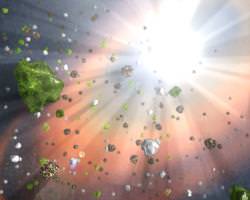Carl Sagan noted that we’re all made of starstuff; the elements fused together in stars and detonating supernovae. But maybe we’re made of something else too, outflowing dust from actively feeding supermassive black holes – known as quasars – that populated the early Universe. New observations made by NASA’s Spitzer Space Telescope has found evidence of dust pouring out of distant quasars. Dust that might have gone on to form more complex molecules, and even life. We’re all made of quasarstuff?
Our Sun formed in a region of the Milky Way enriched by the deaths of massive stars. As these monsters detonated as supernovae, they created the heavier elements and spread them far and wide around the region. But what about the early Universe, before generations of massive stars had a chance to live and then die as supernovae? Where did all the raw materials come from?
Researchers from the University of Manchester in the U.K. have written a new research article describing how they have discovered dust pouring out of supermassive black holes in the early Universe. Known as quasars, and bright enough to be seen clear across the Universe, these actively feeding black holes are actually quite messy. They eject more material out in polar jets than they’re actually able to consume.
And according to Spitzer, the material they’re ejecting contains plenty of complex dust. In one example, a quasar 8 billion light-years away is spewing out a mix of ingredients that make up glass, sand, marble and even precious gems like rubies and sapphires.
This is quite surprising, since the main ingredient of sand, crystalline silicate, can’t last long in space. The radiation from stars should be blasting the molecules back to a glass-like state. If there’s crystalline silicate, there must be a source replenishing it faster than the radiation can break it down. That source seems to be quasars.
It now appears that both supernovae and quasars work together to seed galaxies with heavier elements and complex molecules. So, we might not only be starstuff, we could also be quasarstuff.
Original Source: NASA/JPL/Spitzer News Release

